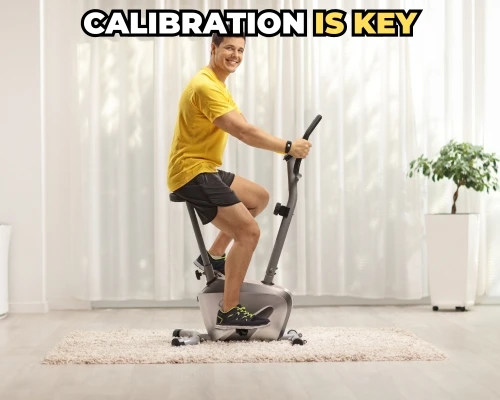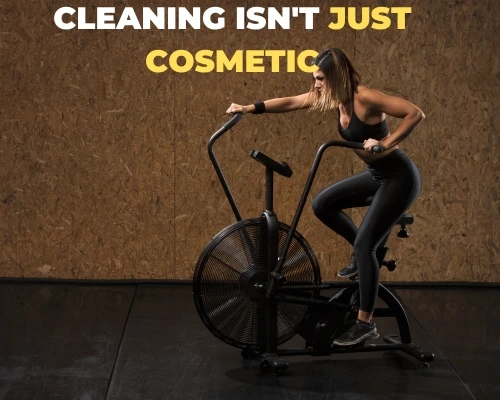Maintaining a Peloton isn’t just about sweat and gears. It’s about knowing the secrets, the ins and outs. Think it’s just riding? Think again.
Every Peloton owner faces the same struggle: keeping it in top shape. It’s not just about adjusting the seat or the handlebars. There’s a world beneath.
A world of hidden settings, insider tricks. Ever wonder why some bikes feel better? Why some rides seem smoother? It’s not magic. It’s knowledge.
The kind that instructors whisper about. The settings that make or break your ride. This isn’t just about maintenance. It’s about unlocking the full potential of your Peloton. Struggling with calibration? Feeling like your effort isn’t reflected accurately?
You’re not alone. We’ve been there. And we’ve got the secrets. Dive in, and let’s demystify those settings. Together, we’ll ensure your ride is as efficient as your instructor’s. Ready? Let’s get your Peloton feeling like new, every ride.
Maintaining a Peloton – Tips and Instructors’ Secret Settings
Calibration Is Key
Think your Peloton feels off? Calibration makes a world of difference. It’s not just a fancy term. It’s crucial. Regular checks ensure your effort matches output. Ignore it, and you’re pedaling in the dark. Instructors swear by a monthly check. It keeps rides accurate. And fair.
Cleaning Isn’t Just Cosmetic
Sweat corrodes. Dust clogs. Sounds dramatic? It’s true. Instructors have a secret: They clean after every ride. A quick wipe-down preserves sensors and prevents wear. Focus on the screen, handlebars, and seat. Use a gentle cleaner. Your Peloton will thank you.
Tighten Those Bolts
Loose bolts equal rocky rides. Ever felt your bike wobble? It’s not supposed to. The secret? Tighten bolts every few weeks. An Allen wrench is your best friend here. Don’t overdo it. Just snug, to keep everything stable.
Secret Settings Unveiled
Here’s the gold. Instructors have preferred settings. They adjust resistance levels for a personal touch. Start with the basics. Then, experiment. Find what feels right. Adjust the saddle height. Then, the handlebar distance. Small changes, big impact. This customization is the secret sauce. It transforms a good ride into a great one.
Listen to Your Bike
Sounds weird? It’s not. Your Peloton talks, through creaks and squeaks. Unusual noises often mean something’s off. Don’t ignore them. They’re clues. Inspect the area. Often, it’s something simple. A quick adjustment or lubrication fixes most issues.
Software Updates
Boring? Maybe. Important? Absolutely. Instructors know this. Updated software means new features and bug fixes. It keeps your Peloton running smoothly. Set it to update automatically. You’ll stay on the cutting edge, without thinking about it.
Personalize Your Profile
It’s not just about adjustments. It’s about making it yours. Instructors customize their profiles for a reason. It tailors the experience. Enter your weight and height accurately. It affects calorie calculations and more. Make it reflect you. It enhances the journey.
Calibration Is Key

Understanding calibration is like unlocking a secret level in a game. It’s that crucial step most overlook. Yet, it dramatically changes the game. Let’s dive in, step by step.
Step-by-Step Guide to Calibrating Your Peloton
- Start with a Clean Slate: Before anything, ensure your bike is clean. Dust and grime affect calibration.
- Enter Calibration Mode: Find this in your settings. It’s like the hidden door to Narnia. Exciting, right?
- Follow the On-Screen Instructions: The Peloton will guide you. It’s straightforward. Adjust the tension as instructed. It’s like tuning a guitar. Just right is the goal.
- Test Ride: Once calibrated, take a short ride. Feel the difference? It should feel just like that first ride.
How Often Should You Calibrate?
- Regular Riders: At least once every month. It keeps your readings accurate. Like clockwork.
- Light Users: Every two to three months. Even if it sits, it needs tuning. Think of it as a check-up.
- After a Move: Always recalibrate if you move your Peloton. Shifting can throw off its balance.
Cleaning Isn’t Just Cosmetic

Think of your Peloton as more than a bike. It’s your partner. Like any good partnership, it thrives on care. Cleaning isn’t just about shine. It’s preservation. Let’s break down the essentials.
Best Practices for Cleaning Your Peloton
- Post-Ride Wipe Down: After every ride, grab a soft cloth. Wipe down the sweat. It’s not just water. It’s acidic. It wears down your bike.
- Focus on High-Touch Areas: Handlebars, seat adjusters, and the screen need the most love. They harbor germs and sweat.
- Weekly Deep Clean: Once a week, give your Peloton the spa treatment. A thorough clean, from pedal to screen.
Recommended Cleaning Products and Tools
- Microfiber Cloths: Gentle on screens, tough on grime. They don’t scratch.
- Gentle Cleaners: No harsh chemicals. Look for cleaners labeled as safe for electronics. They protect while they clean.
- Small Brush or Compressed Air: Get into those nooks and crannies. Dust accumulates and affects performance.
Listen to Your Bike

Your Peloton speaks. Not in words, but in whispers, clicks, and hums. Listening is an art. Master it, and you become one with your ride. Let’s tune in.
Understanding What Different Sounds Mean
- Whispers of Resistance: A soft whirring sound as you pedal. It’s normal. It’s the sound of your effort.
- Clicks on the Climb: Hear a click with each pedal stroke? Check your cleats and pedals. They might just need a quick tighten.
- The Hum of Harmony: A gentle hum indicates everything is as it should be. Your bike is in tune.
Troubleshooting Common Noises
- Squeaks and Creaks: Often, these are cries for lubrication. Look to the seat post or the flywheel. A bit of lubricant usually quiets them.
- Rattles and Clanks: Loose parts speak in rattles. Inspect your water bottle holder, weights, and screen. Tighten them up.
- Persistent Clicks: Still clicking after checking pedals and cleats? It might be the crank arm. It’s time for a deeper dive or a professional look.
Advanced Maintenance Tips
Venturing into the realm of advanced maintenance is like becoming a Peloton sage. It’s about foresight, understanding, and timely intervention. Let’s explore the depths.
Dealing with Mechanical Wear and Tear
- Chain Care: The chain, the heart of your bike’s movement, requires regular lubrication. Silence is golden. A quiet chain is a happy chain.
- Pedal Prowess: Pedals bear your full force. Annually, give them a turn. Check for wear. Replace if they protest too much.
- Flywheel Focus: The flywheel keeps your ride smooth. Dust it. Keep it clean. A smooth ride today ensures a smooth ride tomorrow.
When to Seek Professional Help
- Unsolved Mysteries: If noises persist, despite your best efforts, it’s time. Professional eyes see what we cannot.
- Yearly Check-ups: Even without concerns, a yearly inspection is wise. Consider it a wellness visit for your Peloton.
- Upgrade Attempts: Thinking of adding mods? Upgrades? Seek advice. Some enhancements are better left to those with experience.
As an Amazon Associate, I earn from qualifying purchases, at no additional cost to you. Read Our Affiliate Disclosure.

